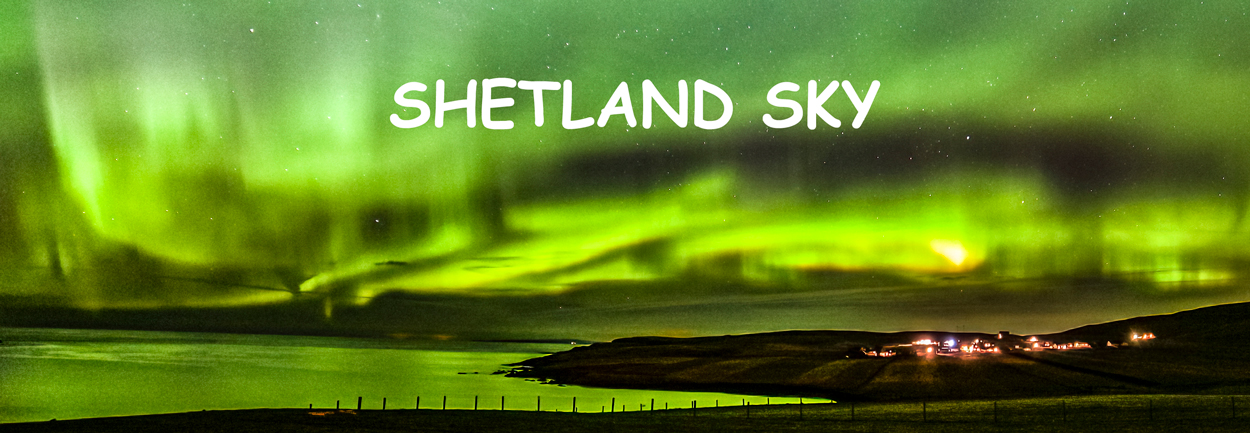As the nights in Shetland get lighter you have to wait until after midnight until darkness occurs, that is if the moon is not showing. Unfortunately this is not a good time to see the Aurora with all this light around. The aurora has been showing but well after midnight in recent days.
The chart below shows the colours of the aurora and where they appear according to altitude.

I recently bought the DVD Joanna Lumley - In search of the northern lights, its makes for great viewing, no wonder it has got around 150 five* recommendations from people who have left reviews on Amazon.
It seems that seeing the Aurora is on the top of everyone bucket list and many people are travelling either to Norway or Iceland to see the lights. Every time we have seen them in Shetland we have been impressed, whether the green band on the horizon or larger more colourful curtains.
There is also something about seeing them in the UK, in the same place as you live. Moving to Shetland has provided more opportunities to see these colourful lights, you have to react quickly as they can disappear very quickly other times they are present for hours, other times the clouds move in the obscure them.
The other Monday was a rather special day, not at night this time but during the afternoon when Mercury passed in front of the sun. This transit was 7 hours in total and I managed to catch around 5 hours of it. Here are some photos and times.
It appears as only a dot, but that shows how small Mercury really is and of course how large the sun is. The next time it will be visible like this is in 2019 and then in 2032. The transit of Mercury around the sun happens only 13 times a century, so quite rare to see this.
Mercury is the smallest planet in our galaxy and the closest one to the sun. To think you can actually photograph Mercury is amazing. These photos have been taken with a Nikon D300s +500 mm lens = 750 mm and a solar filter ( a must to photographing the sun).
It seems that seeing the Aurora is on the top of everyone bucket list and many people are travelling either to Norway or Iceland to see the lights. Every time we have seen them in Shetland we have been impressed, whether the green band on the horizon or larger more colourful curtains.
There is also something about seeing them in the UK, in the same place as you live. Moving to Shetland has provided more opportunities to see these colourful lights, you have to react quickly as they can disappear very quickly other times they are present for hours, other times the clouds move in the obscure them.
The other Monday was a rather special day, not at night this time but during the afternoon when Mercury passed in front of the sun. This transit was 7 hours in total and I managed to catch around 5 hours of it. Here are some photos and times.
It appears as only a dot, but that shows how small Mercury really is and of course how large the sun is. The next time it will be visible like this is in 2019 and then in 2032. The transit of Mercury around the sun happens only 13 times a century, so quite rare to see this.
Mercury is the smallest planet in our galaxy and the closest one to the sun. To think you can actually photograph Mercury is amazing. These photos have been taken with a Nikon D300s +500 mm lens = 750 mm and a solar filter ( a must to photographing the sun).





